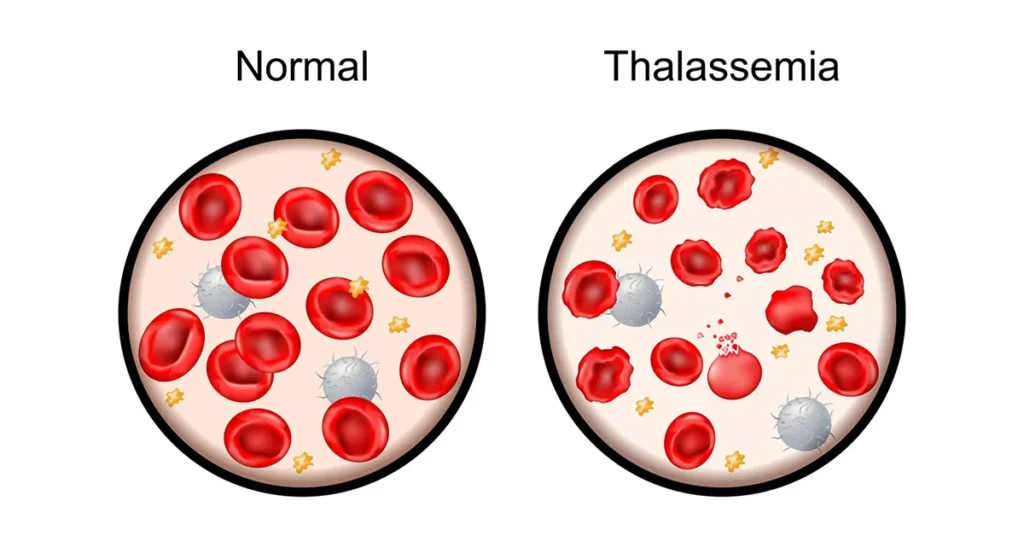Thalassemia is an inherited blood disorder that affects the production of hemoglobin and healthy red blood cells.
It’s essential to understand the differences between thalassemia major and thalassemia minor to recognize their impact on health and treatment options.
What Is Thalassemia?
Thalassemia disrupts the normal hemoglobin production process, leading to anemia. Hemoglobin is a protein in red blood cells that transports oxygen throughout the body.
When hemoglobin production is impaired, it affects the oxygen-carrying capacity, leading to various symptoms.
Thalassemia Minor (Thalassemia Trait)
Inheritance:
- Thalassemia minor occurs when an individual inherits one mutated gene from either of their carrier parents.
- Also known as being “heterozygous” for beta-thalassemia.
Severity:
- A mild form of the disease.
- Often asymptomatic or presents with mild anemia symptoms.
- Normal iron levels.
Symptoms:
- Fatigue
- Pale skin
- Mild anemia (similar to mild iron deficiency anemia)
Treatment:
- Usually, no specific treatment is required.
- Individuals with thalassemia minor can lead normal lives.

Thalassemia Major (Cooley’s Anemia)
Inheritance:
- Thalassemia major occurs when an individual inherits two defective genes (one from each parent).
- Termed “homozygous” for beta thalassemia.
Severity:
- Severe form of the disease.
- Significant illness due to deficient beta globin production.
Symptoms:
- Severe anemia.
- Fatigue, weakness.
- Jaundice.
- Enlarged spleen.
- Bone deformities (in severe cases).
Treatment:
- Regular blood transfusions are necessary.
- Iron chelation therapy to manage iron overload.
Lifelong medical care.
Final Thoughts
Understanding the differences between thalassemia major and minor is crucial for early diagnosis, appropriate management, and improved quality of life.
If you suspect thalassemia or have a family history, consult a healthcare professional for proper evaluation and guidance.
Remember, knowledge empowers us to make informed decisions about our health.
